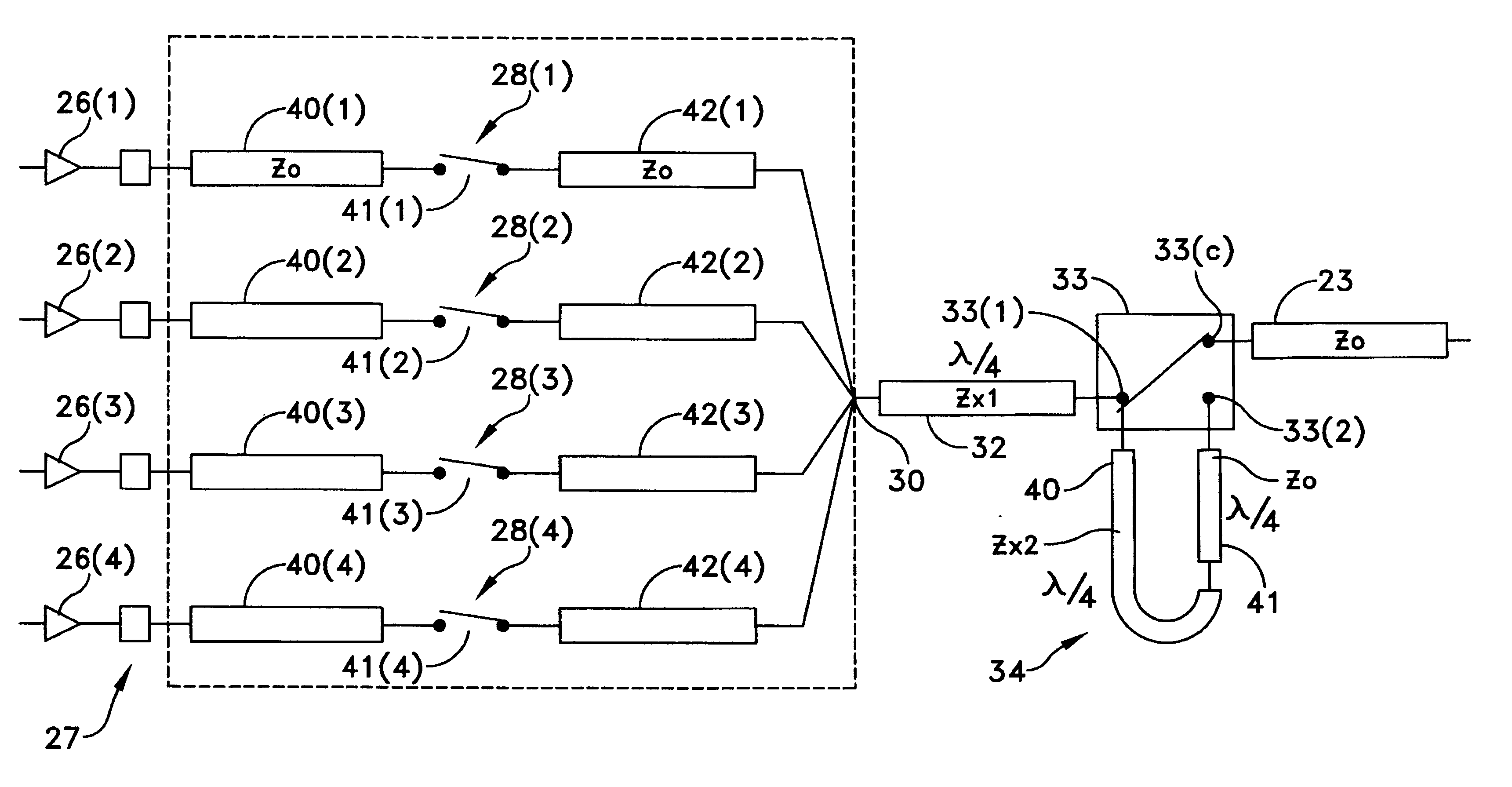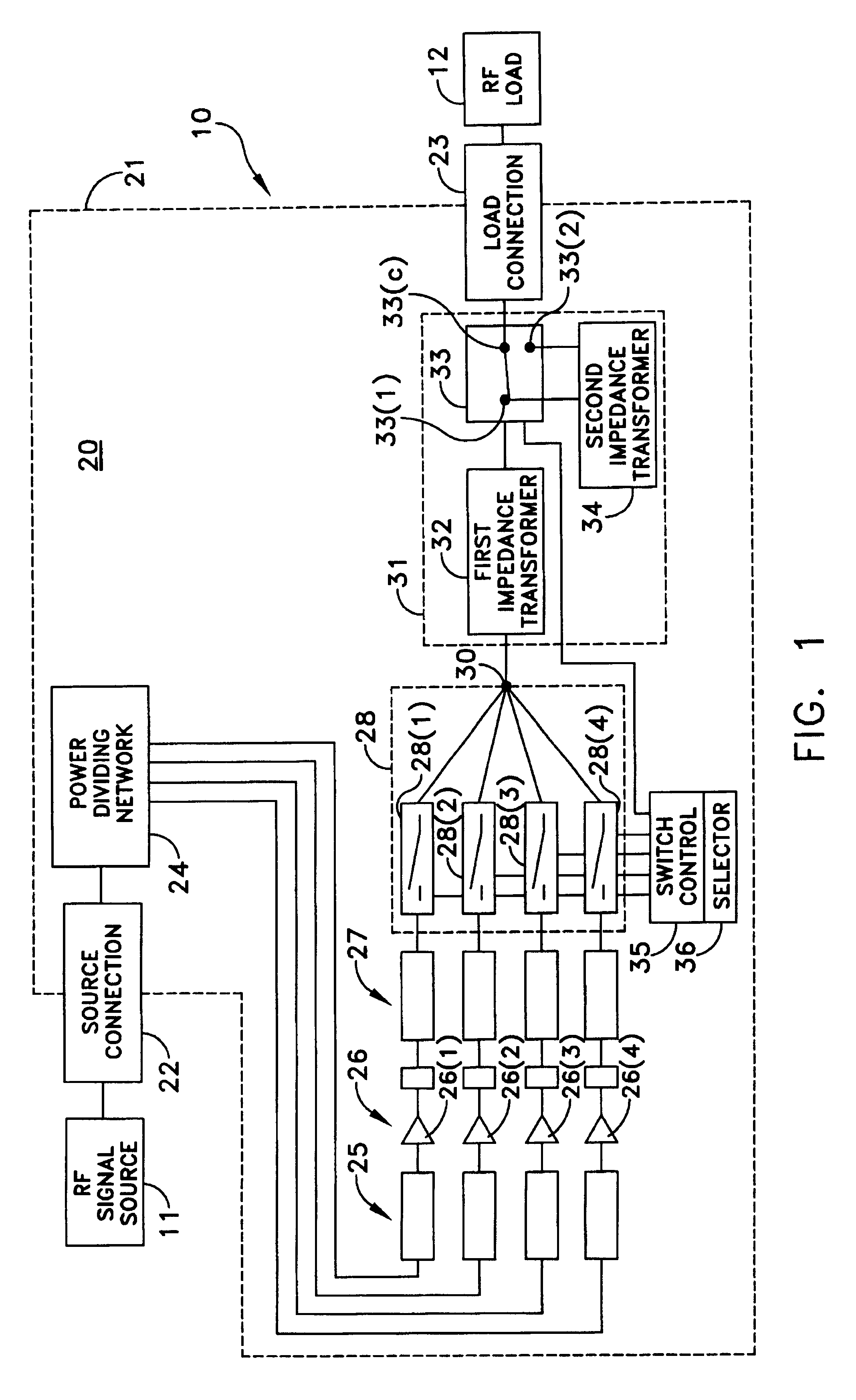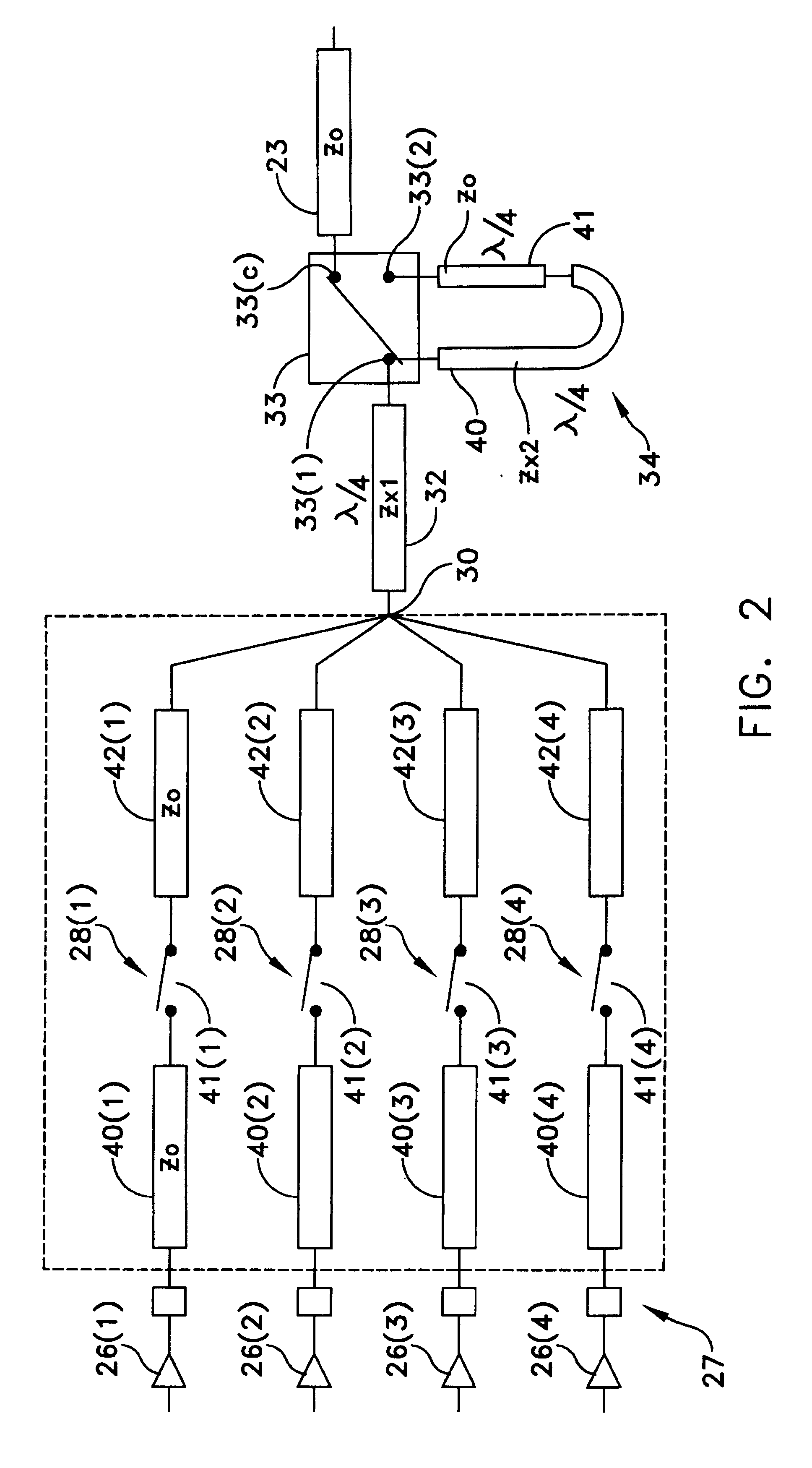RF power divider/combiner circuit
a power divider and combinator technology, applied in the field of rf communication, can solve problems such as increased vswr and insertion loss, increased insertion loss, and difficulty in solving problems
- Summary
- Abstract
- Description
- Claims
- Application Information
AI Technical Summary
Benefits of technology
Problems solved by technology
Method used
Image
Examples
Embodiment Construction
FIG. 1 depicts an RF system 10 that includes an RF signal source 11 and an RF load 12. A power divider / combiner circuit 20 includes a grounded chassis 21, a source connection 22 for receiving signals from the RF signal source and a load connection 23 for providing signals to the RF load 12. The source and load connections 22 and 23 typically will be constituted by coax feed-through couplings for receiving a connector on a transmission line from the RF signal source 11 or from the RF load 12. However, the source and load connections 22 and 23 could be any variety of connection.
A power dividing network can take any of several conventional forms that will divide the signal appearing at the source connection 22 into equi-phase, equi-amplitude signals. For an N-way power combiner circuit the division is into N paths. N=4 is a typical value and is used in the following discussion. Specifically, FIG. 1 depicts four such paths to a series of amplifier input connections 25. These amplifier i...
PUM
 Login to View More
Login to View More Abstract
Description
Claims
Application Information
 Login to View More
Login to View More - R&D
- Intellectual Property
- Life Sciences
- Materials
- Tech Scout
- Unparalleled Data Quality
- Higher Quality Content
- 60% Fewer Hallucinations
Browse by: Latest US Patents, China's latest patents, Technical Efficacy Thesaurus, Application Domain, Technology Topic, Popular Technical Reports.
© 2025 PatSnap. All rights reserved.Legal|Privacy policy|Modern Slavery Act Transparency Statement|Sitemap|About US| Contact US: help@patsnap.com



